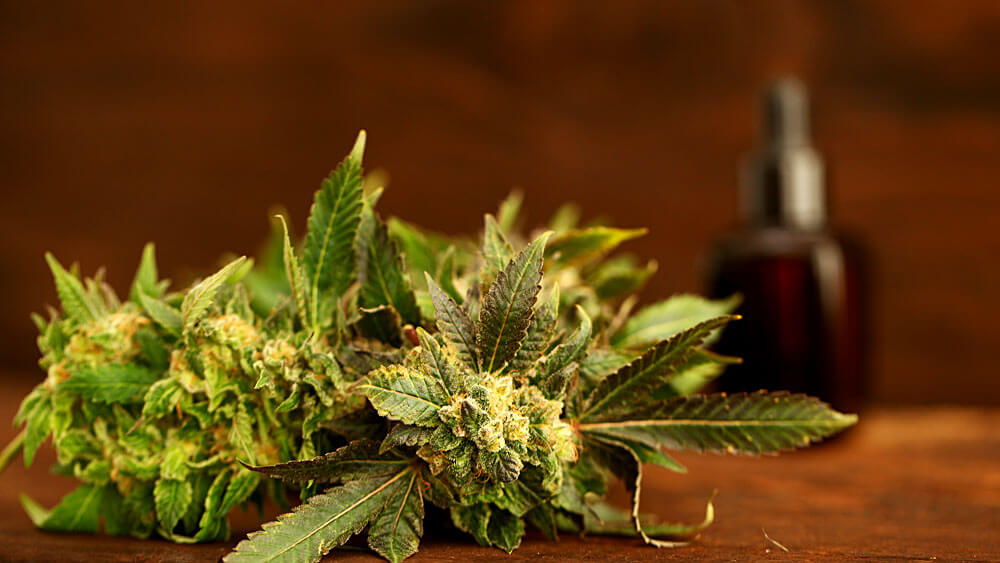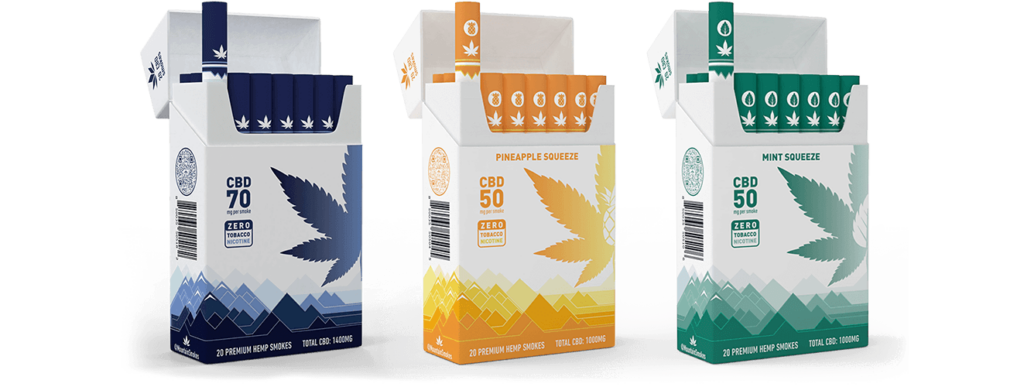The Difference Between Hemp and Cannabis

Both hemp and cannabis are multi-billion-dollar industries fueled by demand from tens of millions of individuals worldwide. Yet, despite the prevalence and popularity of both, many consumers struggle to discern or are unaware of the key differences between hemp and cannabis.
This leads to a multitude of questions surrounding the topic, most of which we aim to clear up for you in this guide.
What is Hemp?
Known commonly as ‘industrial hemp’, hemp is a plant in the botanical class of Cannabis Sativa cultivars. Most commonly grown for industrial or medicinal use, hemp can be found in a multitude of products ranging from textiles to bio-degradable plastics and CBD supplements.
Hemp has a long and storied history across the world. According to archaeological data, some 50,000 years ago hemp became was one of the first plants to be made into usable fiber.
In the USA, its use dates back to early colonists, leading to some of the most famous US figureheads such as Thomas Jefferson cultivating their own stock.
What is Cannabis?
Known more commonly as marijuana or weed (among a multitude of other slang terms), cannabis is a psychoactive drug cultivated from the Cannabis plant.
A member of the Cannabaceae family of flowering plants, the cannabis plant is comprised of three separate species, although there is some contention among scientists to this fact.
The three scientifically and widely recognized species include Cannabis Indica, Cannabis Sativa and Cannabis Ruderalis. In some circles, all three may be classified as a ‘sub-species’ of C. Sativa, while others prefer to classify each as its own.
Native to the Indian subcontinent and Central Asia, cannabis has long been used for ceremonial, religious, medicinal and recreational purposes.
What is Marijuana?
Marijuana is a term used to describe the drug that comes from the Cannabis sativa or indica plant. Marijuana may be used when referring to the buds, flowers, leaves, stems and seeds of the plant.
According to Cornell University’s Legal Information Institute, the legal definition of marijuana under 21 U.S. Code § 802 is as follows:
Sec. 19. "Marijuana" means any part of the plant genus Cannabis whether growing or not; the seeds thereof; the resin extracted from any part of the plant, including hashish and hash oil; any compound, manufacture, salt, derivative, mixture, or preparation of the plant, its seeds or resin. It does not include the mature stalks of the plant; fiber produced from the stalks; oil or cake made from the seeds of the plant; any other compound, manufacture, salt, derivative, mixture, or preparation of the mature stalks (except the resin extracted therefrom); or the sterilized seed of the plant which is incapable of germination."
This definition, however, is not applicable to: hemp, as defined in section 1639o of title 7; or the mature stalks of such plant, fiber produced from mature stalks, cake or oil made from the seeds of mature plants, any other mixture, derivative, compound or preparation of mature stalks (with the exception of extracted resin), oil, fiber or cake, or sterilized cannabis seed incapable of germination.
Reference: https://www.law.cornell.edu/uscode/text/21/802
What Is The Primary Difference Between Hemp and Cannabis?
Although there are a multitude of differences ranging from nuanced to bold, the most commonly cited difference is that hemp is grown to intentionally produce less than 0.3% ∆9-THC per federal guidelines in the United States. If the hemp plant has more than a 0.3% concentration of ∆9-THC, it is reclassified as marijuana.
What is the Distinction Made in the Words Hemp & Cannabis?
By definition, ‘hemp’ or ‘industrial hemp’ refers to Cannabis S. cultivated specifically for industrial and agricultural purposes. Hemp is used in tens of thousands of products ranging from food to textiles, plastics, construction material and more.
Conversely, Cannabis is a term generally used to describe a plant cultivated for marijuana, and used mainly for medicinal or recreational purposes. Cannabis plants are THC-dominant, whereas hemp most typically has less than 0.3% THC and is non-psychoactive.
What Are the Physical Differences Between the Plants?
Cannabis S. plants used to cultivate hemp, and those varieties used to cultivate marijuana are visually quite similar, leading the uninitiated to sometimes mistake one for the other. However, there are subtle differences that make each distinctive enough to pick them out from a lineup.
Physical Characteristics of the Hemp Plant
Hemp is an erect annual herb that can be described as stout, slim and tall, reaching heights of nearly 18.5ft. Hemp is an aromatic plant, giving off a strong aroma reminiscent of marijuana.
Stalks of the plant are long, hollow, and cane-like, solidifying at the base and tip. Leaves of the hemp plant are compound, featuring a palmate shape. These leaves resemble an outstretched hand (i.e. ‘palm’) with lobes that extend from a common central point on the leaf. These leaves tend to be skinny, and are most densely located near the peak of the stalks.
Trichome-dense buds form amid the leaves near the top of the stalks, from which small yellow-green flowers emerge. These flowers form elongate branched clusters producing pollen and seeds. With female plants, the flowers grow from the pistillate, and with male plants, from the staminate.
Physical Characteristics of the Cannabis Plant
The cannabis plant is a dioecious, annual flowering herb. Similar to the hemp plant, its leaves are both compound and palmate in shape, featuring serrated leaflets.
As compared to hemp, cannabis plants are usually on the shorter, denser and bushier side, with broad leaves situated all along the plant’s stalk as opposed to just near the stalk’s top.
The initial pair of cannabis leaves often feature a single leaflet, with the number of these leaflets increasing to reach a maximum of around 13 leaflets per leaf. Upper leaf pairs are in an alternate arrangement on the primary stem, whereas those pairs on the lower portion of the stalk occur in opposite leaf arrangements. Of note is that these leaves have a unique diagnostic venation pattern (meaning the veins in the leaves are species-specific), enabling easy identification of the plant from unrelated species even for the untrained eye.
Serrations of the leaves each have a central vein that extends to the tip, with each of these veins connecting to a central midvein on the palm of the leaf.
What are the Chemical Differences in the Plants’ Contents and Why is it Important?
Hemp chemotypes II, III, IV and V, as well as Cannabis chemotype I are all considered Cannabis Sativa plants. While tetrahydrocannabinol (THC), the psychoactive compound in cannabis, is present in both all chemotypes, it is much lower in hemp.
Hemp is notable for lower THC and often as a higher concentration of cannabidiol (CBD). In the USA, as it pertains to industrial agriculture, hemp is defined as Cannabis S. having less than 0.3% THC.
Dominant Compounds in Cannabis S. (hemp and cannabis)
- THCA
- CBDA
- CBNA
- Cannabigerolic acid (CBGA)
- Cannabichromenic acid (CBCA); and
- Cannabinodiolic acid (CBNDA)
Reference: https://pubmed.ncbi.nlm.nih.gov/16199061/
Terpenes are also a major constituent of hemp (and cannabis), with more than 100 unique molecules identified. It is the terpenes that are responsible for the plant’s notoriously identifiable aroma, as well as flavor when ingested or smoked.
Non-Exclusivity of Plant Compounds
It is worth noting that no plant compound, phytochemical, cannabinoid or terpene is exclusive to either hemp or cannabis. Similarly, the CBD found in hemp is the same CBD molecule found in cannabis, and the THC in cannabis is the same found in hemp.
Phytochemical Composition of Hemp
Hemp’s phytochemical profile is comprised mostly of cannabinoids, a phenolic compound, and terpenes. These compounds are the result of plant metabolism and biosynthesis. To date, more than 480 chemical compounds have been identified within the Cannabis S. plant.
In hemp varieties, CBDA is the dominant cannabinoid in both hemp seed and hemp fiber. Cannabidolic acid is the chemical precursor to cannabidiol (CBD), and is attributable to hemp’s propensity to have a much higher concentration of CBD (often between 10-20%) than does Cannabis S. cultivated for marijuana.
Phytochemical Composition of Cannabis
The chemical composition of Cannabis plants cultivated for marijuana is comprised of predominantly THCA, and to a much lesser degree, CBDA and CBNA. This explains cannabis’ higher concentration of THC and relatively low concentration of CBD. It is not uncommon for cannabis to have concentrations of THC ranging between 10-35%.
The plant itself has more than 480 chemical compounds, of which at least 60 are classified as cannabinoids.
Reference: https://www.ncbi.nlm.nih.gov/pmc/articles/PMC4740396/
What Are the Different Ways Cannabis and Hemp are Cultivated?
Hemp Cultivation
Hemp may have originated in Central Asia, but today hemp farms can be found all around the world. A hardy plant, hemp is capable of growing well across most parts of the world (and across the USA), aside from desert-like environments and high altitudes.
That said, hemp thrives the best in warm, mild weather such as that of temperate zones around the world.
Soil should be well-drained and dense in organic matter for best results.
The plant is dioecious meaning that female and male flowers grow separately on gender-specific plants. Generally speaking, around half of the hemp crop will be male and half female.
Seeds should be sowed, ideally, after the average date of the last frost for that region has passed. In the northern hemisphere, this is usually between March and May, and in the southern hemisphere, between September and November.
Once established, hemp plants are hardy and largely drought-tolerant, although seedlings require irrigation for the first 6 weeks to keep the soil moist. Hemp’s ideal conditions include an average monthly rainfall of around 2.5” during the growing season. Maturation is achieved sometime between 60-90 days on average.
Those crops cultivated for their fibers tend to be densely sowed, producing a crop that ranges between 6-10ft in height with minimal branching. Hemp grown for oilseed tend to be spaced further apart and grow into shorter, branched plants when mature.
Cannabis Cultivation
While hemp is grown primarily for its oil, seed and fibers, cannabis is grown primarily for its leaves and buds.
The plant prefers commercial potting soil or soil with a good nutrient profile and a pH between 5.8-6.5. However, several successful growers use aeroponic or hydroponic setups.
The specific nutrient profile for optimal cultivation varies based on the life phase and strain being cultivated. Generally speaking, the plant prefers a greater amount of nitrogen than it does phosphorus and potassium (the elements that make up NPK numbers on fertilizer packaging) in the vegetative (growth) phase, with an uptick in phosphorus/potassium in flowering. Other micronutrients that are often used or recommended include calcium, sulfur and magnesium.
Optimal daytime temperatures for cannabis range between 75-86 F with a humidity level somewhere between 40-60%. Temperatures below 60 F or above 88 F both slow growth and reduce the amount of THC the plant produces.
Cannabis can be grown outdoors, indoors or in a grow house (greenhouses and hoop houses). It does well with both natural as well as grow lights. When light is controlled, longer periods tend to result in higher vegetative growth, whereas increased hours of darkness increase flower and bud production.
The amount of hydration necessary varies widely depending on growth factors including light and temperature. Over-saturation will often kill the plants, and is often indicated by wilting, yellowing leaves. As such, a good draining soil is necessary when planted or potted.
Cannabis and Hemp – Similar But Different
Given that both cannabis and hemp come from the same plant (Cannabis S.), it’s no wonder that there is a lot of confusion around the two plants. Although both share many similar characteristics, we hope that this guide helped to pull back the curtain on what makes them unique. Both cannabis and hemp have incredibly storied histories and are major players in societies and cultures around the world.
Having grown to multi-billion dollar industries, one thing is certain, the future looks bright for both cannabis and hemp, and we’re excited to see what innovations and discoveries await.
MOUNTAIN Smokes®
ZERO TOBACCO. ZERO NICOTINE. Premium Organic Full-Flower Hemp Smokes.
 SHOP MOUNTAIN SMOKES
SHOP MOUNTAIN SMOKES
 Made in the USA
Made in the USA
 Satisfaction Guaranteed
Satisfaction Guaranteed
 SSL Secure Checkout
SSL Secure Checkout


